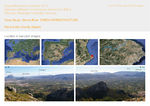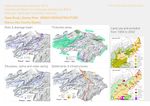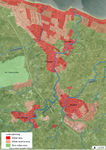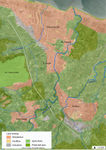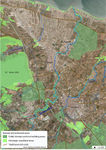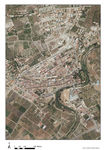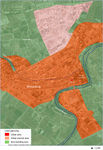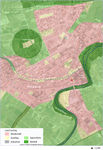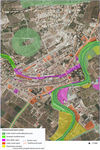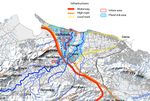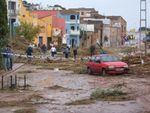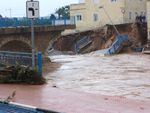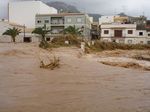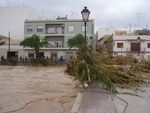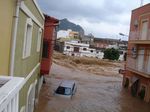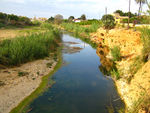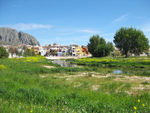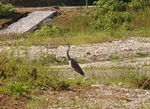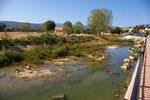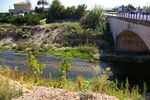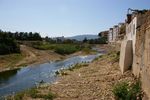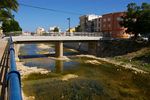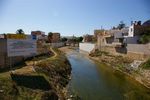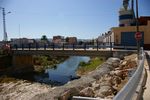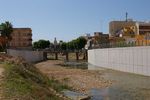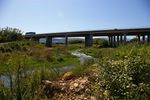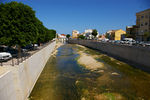Green Infrastructure 2014 Group G - Case Study 2: Difference between revisions
| Line 97: | Line 97: | ||
Image:study area_flood riskiness.jpg|Study area: flood riskiness | Image:study area_flood riskiness.jpg|Study area: flood riskiness | ||
Image:study area_natural and protected areas.jpg|Study area: natural and protected areas | Image:study area_natural and protected areas.jpg|Study area: natural and protected areas | ||
Image:CASE-STUDY_BENIARBEIG_1-5000.jpg|Case study: Beniarbeig. Aerial view | |||
Image:CASE-STUDY_BENIARBEIG_Land-planning.jpg|Case study: Land planning | |||
Image:CASE-STUDY_BENIARBEIG_Land-zoning.jpg|Case study: Land zoning | |||
Image:CASE-STUDY_BENIARBEIG_natural-and-open-areas.jpg|Case study: Natural and open areas | |||
</gallery> | </gallery> | ||
Revision as of 09:59, 19 December 2014
---> back to group page working group G
please add your title here
| Name | Girona river | |
| Country | Spain | |
| City | Beniarbeig, Ondara, El Verger and Els Poblets | |
| Authors | Maria Josep Ripoll | |
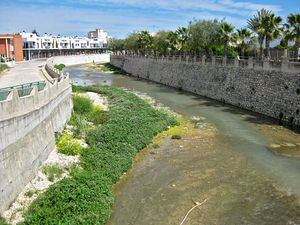
| ||
|
| ||
Rationale: Why is this case interesting?
This is the case of the Girona river. It’s a Mediterranean river in the north of the Marina Alta county in Spain. It is dry most of the year, especially in summer. Girona river connects the mountains from the inside of the county to the coastal plain and the sea. Girona river has a big biodiversity value (fauna, flora and water quality) and close to it there is a protected natural park (a marsh) that gives shelter to different important migratory birds that visit Girona river at times. It preserves some examples of water heritage linked to the historical irrigation systems in the Mediterranean area. The river crosses several towns and infrastructures. It’s potential value is endangered by a lack of environmental awareness in urban planning. In the past, the river was useful and people had a bigger bond with it. Nowadays, It’s thought it’s just a place with no interest or a barrier you need to cross. Moreover, Girona river is known by flash floods, what means that people from downstream area is exposed to an important flood risk.
Author's perspective
I’m geographer. I grew up very close to the site, in the capital of the county: Dénia (45.000 inhabitants). Dénia is placed in the west corner of the Girona river plain, just 10km from the river bed. On 2007 a big flood caused a severe damage on the small towns near the river. I remember that day, it was the first time I saw a catastrophe like that. I was shocked by the images on tv. After the disaster I visited the damaged area. The mud was everywhere and the neighbours had been cleaning their homes for days. In some streets the water had reached almost 3 meters high. After the disaster, people began to ask questions: Why it happened? Could it be prevented? Who is responsible? Do we have an accurate flood planning? Are the authorities really worried about our lives? Because of the lack of answers and while the politicians were exchanging mutual accusations, people got organized in a civic platform. I was involved in this citizen platform to provide advice.
Landscape and/or urban context of your case
Girona river is born at 650 meters over the see level in the small town of Vall d’Alcalà. In the west side of the Marina Alta county. It has 34.7 km long and his drainage basin has 105 km². The river crosses the spectacular and hilly site known as “Barranc de l’Infern” (Devil’s gorge). It has an important geological and archeological value, and is highly appreciated by hikers and climbers. At the exit of the Devil’s gorge, a dam was builded on 1944 to increase water supply but it failed because of the permeable soil below the damp. Today the damp is almost silt with sediments and it hardly works delaying the flash flood. All these area upstream is a natural protected zone associated to the European Natura 2000. It is protected as a Site of Community Importance (SCI) and a Special Protection Area of Wild Birds (SPA).
From the damp to the sea, the river has 20.38km long. This stretch of the river plain does not have any kind of protection. After the damp, the river crosses a width river plain that shapes the north of the Marina Alta county. The richest soils for agriculture are found here. The matrix of the river plain is composed mostly by orchards and vegetable gardens. The river is followed by several towns, some of them in the river banks. The river plain is crossed by road infrastructures (motorway, highway, roads). Several urban settlements and activities are placed there: towns, urban sprawl, shopping mall, industrial areas.
Girona River ends in a sandy beach in the Mediterranean sea. It’s last stretch is surrounded by urban sprawl, detached and semi-detached houses for tourists or owned by elderly residents from central and north Europa. A submarine area about 2.200 ha in front of the Girona river mouth is protected as a SCI and SPA because it keeps a big Posidonia oceanica reef (seagrass endemic to the Mediterranean sea) very important for sea birds feeding.
Some details about the towns in the river plain:
Population: Beniarbeig: 1.915 inhabitants (2013) Ondara: 6.613 inhabitants (2013) El Verger: 4.856 inhabitants (2013) Els Poblets: 3.402 inhabitants (2013)
The tourism and foreign residents has an important impact over population and public services. A lot of foreign residents owned a house and spend part of the year in our county; tourist rent a house or a flat or a room in a hotel for vacations. This “floating” population is not included in the population census but they use infrastructures and public services that used to become overloaded on vacations. Most of the foreign residents are elderly which increases the average age and implies more pressure over medical public services.
Economy: The economy of the towns around the Girona river are based mainly on the services sector (tourism, restaurants, transport, retailing and wholesaling, etc.) and construction sector. The industrial sector is formed by small family business based on traditional manufactured items (furniture, leather industry). Nevertheless, the agriculture sector is still important with the traditional production of oranges and the new introduction of kakis.
River vegetation and fauna The riverbank vegetation is diverse and mainly composed by perennial vegetation: reedbed (Phargmites communis), rhizomatous grasses (Paspalum paspaloides, Paspalum vaginatum), water vegetation (Ranunculus, Potamogeton, etc.), trees such as Salix, Populus, Pinus halepensis, and bushes such as Nerium oleander, Rubus, Rosa canina, Crataegus monogyna, etc. Nevertheless, one species is dominating along the river: Arundo donax, a perennial invasive cane. This cane grows really fast and is reducing the population of native species. The vegetation gives shelter to different species of fish, amphibian or crustacean. Some of them are endemic and fragile or are endangered. The amount and variety of birds that visit the Girona river is increasing because of the proximity of the Oliva-Pego Marsh Natural Park. Several protected species of birds spend the winter or nest in the marsh and used the Girona river (upstream and downstream) to graze and feeding.
River water quality Using a biological index IBMWP (Iberian Biomonitoring Working Party) it is possible to stablish the water quality depending of the macro- invertebrates collected in different water samples (2004 and 2005). Near the town of Sanet the index was 127 and in El Verger 97, corresponding to index values of very good quality (good ecological condition, water without contamination or not disrupted). (Zamora et al. 2005)
History Before the second half of the 20th century, the river was very important for the daily life of the towns surrounding the river. People got canes as construction material and to feed the livestock. Sand and stones were used in construction too. But most of all, the water was used for irrigation. Some of the towns were really rich providing vegetables and fruits to the market.
Dynamics The urban pressure and the new economic activities are the dynamics behind it’s degradation. Today the river is almost abandoned. Infrastructures and urban activities near the river are narrowing the river bed and blocking the water flow. And the industrial activities are throwing waste and polluting the water.
- Illustrations
Analytical drawings
Conflicts: High urban pressure and infrastructures. Habitat and landscape fragmentation. Reduction of the river bed and water flow blocking. High flood risk
Potentials: Connectivity between the mountains and the sea. Connectivity and proximity of natural protected areas. Proximity of population and management of public uses. Potential to increase riverbank vegetation. Habitat for endangered species. Good water quality. Agricultural landscape matrix
- Analytical Drawings
Green Infrastructure benefits for this site
Improvement of riverbank and drainage basin vegetation: river restoration and basin reforestation. Reduction of flood risk. Reduce stormwater run-off and increase infiltration. Habitat improvement and connectivity. Increase the social value of the river
Potential for multifunctionality
From the social point of view: Leisure and public use. Mobility: cycling and walking. Reduce riskiness. Increase quality of life and safety. Increase environmental awareness
From the ecological: Habitat improvement. Ecological functions and services increase. Increase connectivity and reduce ecological fragmentation
From the economical: New attractive areas for business, stores, bar, etc. Reduce of flood damages and increase of safety
Projective drawings
- How would you like this case to change in the near future? (in 1-2 years)
- you may add a short explanation here
- And how could it look like in 10-15 years?
- you may add a short explanation here
- Projective Drawings
- Yourdrawing.jpg
projective drawing
- Yourdrawing.jpg
projective drawing
- Yourdrawing.jpg
projective drawing
- Yourdrawing.jpg
projective drawing
Summary and conclusion
- 100 words approx.
Image Gallery
Please add further images/photos here
- Image Gallery
References
Confederación hidrogràfica del Júcar (CHX) (2009): Lluvias de octubre de 2007. Trabajos realizados por la Confederación Hidrogràfica del Júcar. Ministerio de Medio Ambiente.
Confederación hidrogràfica del Júcar (CHX) (2011) version preliminar: Memora del Plan Director de Defensa Contra las Avenidas en la Comarca de la Marina Alta. Ministerio de Medio Ambiente.
Costa Mas, J. (1977): El marquesat de Dénia. Estudio geográfico. Departamentos de geografia de Valencia y Alicante, Universitat de València. ISBN: 84-370-0041-6
Costa Mas, J. (2008): El marco geográfico, demográfico y económico de la comarca de la Marina Alta. En: “Historia de la Marina Alta” Tomo I. Insitut d'estudis comarcals de la Marina Alta (IECMA). ISBN: 978-84-931704-4-8
Ripoll Berenguer, M.J. (2008): Pressions i conflictes territorials en el litoral mediterrani: La Marina Alta. Institut Alacantí de Cultura Juan Gil-Albert. Alacant. ISBN: 978-84-7784-538-6
Segura Beltrán, F. (2009): Geomorfología, inundacions y alteración antròpica del espacio inundable: el caso del riu Girona (Alacant, 2007). Boletín de la Asociación Española de Geógrafos, nº 49, pag. 83-103. ISSN: 0212-9426
Zamora, L.; Mezquita, F.; Rueda, J. (2005): Biodiversitat i ecología dels invertebrats aquàtics continentals de la Marina Alta i el seu valor com a indicadors de qualitat de les aigües de la comarca. Institut Alacantí de Cultura “Juan Gil-Albert”. Alacant.
http://riuadagirona.blogspot.com
www.daualdeu.wordpress.com
Wikipedia
Google maps
About categories: You can add more categories with this tag: "", add your categories
